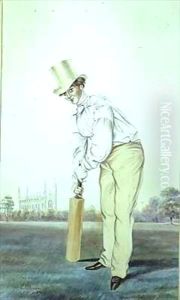Charles Basebe Paintings
Charles Basebe, a British painter, lived a relatively short but impactful life in the world of art. Born in 1841, Basebe's career is often celebrated for its contributions to the Victorian era's rich tapestry of visual culture. Though not as widely recognized as some of his contemporaries, his work provides a fascinating glimpse into the period's artistic diversity and the burgeoning interest in realism.
Basebe's oeuvre primarily consists of landscapes and marine scenes, reflecting a keen interest in the natural world and its depiction with authenticity. His approach to painting was characterized by a meticulous attention to detail and a profound appreciation for the subtleties of light and color. This sensitivity allowed him to capture the ephemeral beauty of the British countryside and its coastal areas with a remarkable degree of realism.
Throughout his career, Charles Basebe navigated the Victorian art world with a quiet determination, exhibiting his works at various prestigious venues, including the Royal Academy of Arts. Despite the competitive nature of the art scene during this period, his paintings were well-received by critics and the public alike, earning him a modest but dedicated following.
Unfortunately, Basebe's life was cut short when he died in 1888, at the age of 47. His premature death meant that his potential was never fully realized, and as a result, his name has often been overshadowed by his more famous peers. However, in recent years, there has been a renewed interest in his work, with art historians and collectors alike celebrating his contribution to the Victorian art scene. Today, Charles Basebe's paintings are valued not only for their aesthetic qualities but also for their historical significance, offering insight into the evolving landscape of 19th-century British art.
